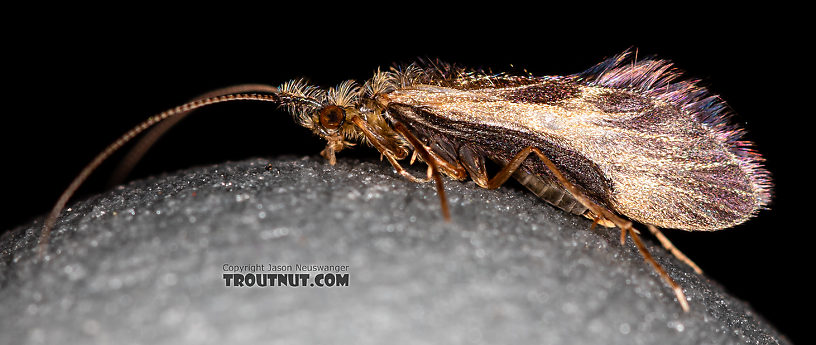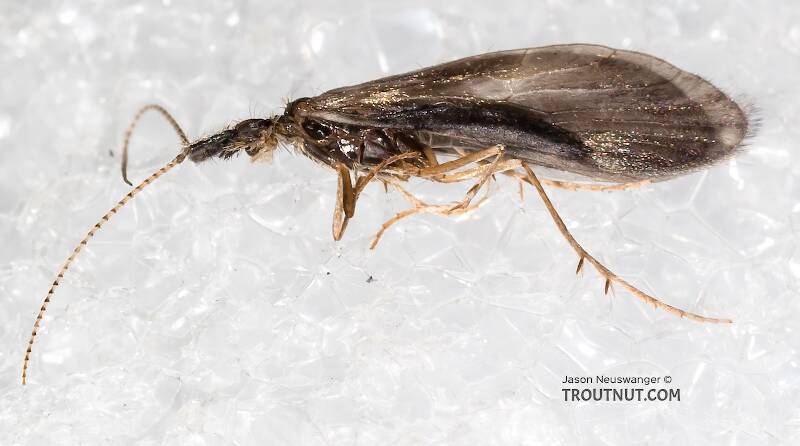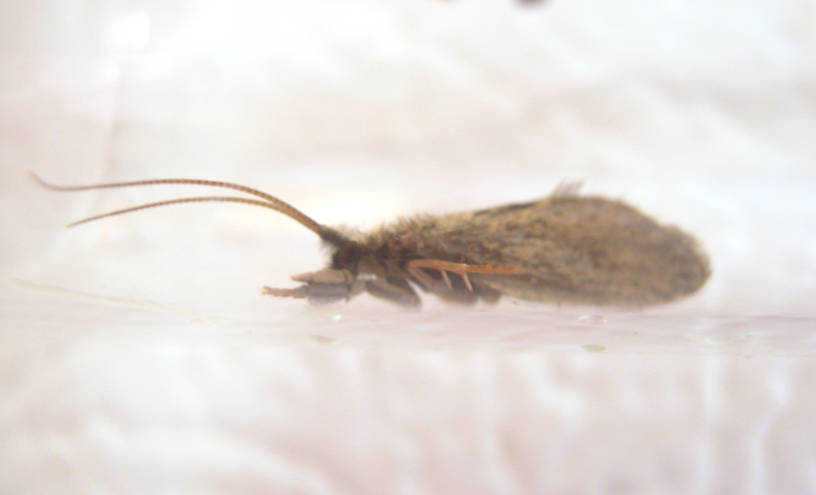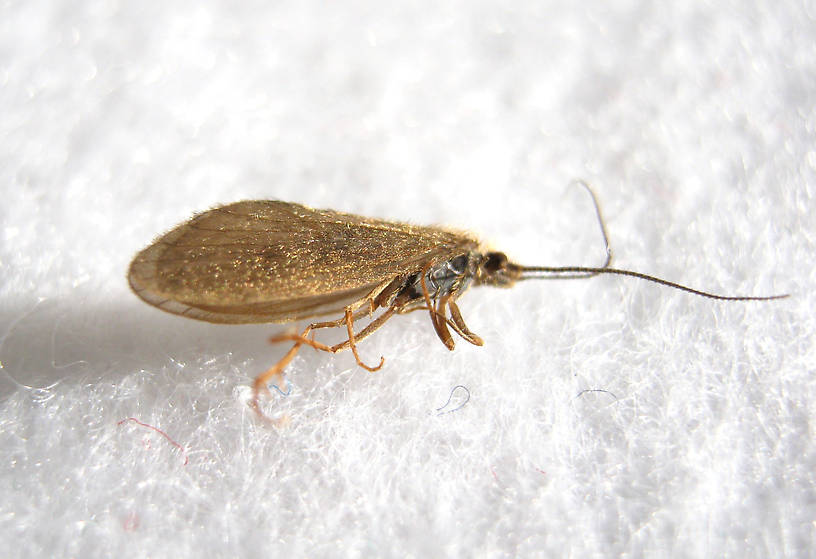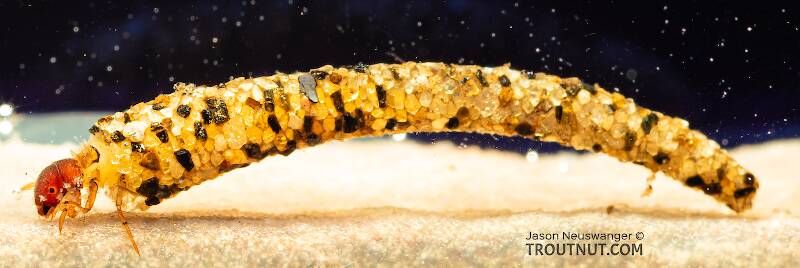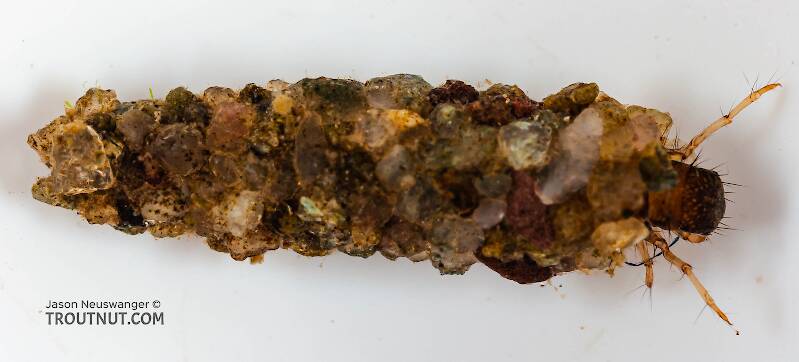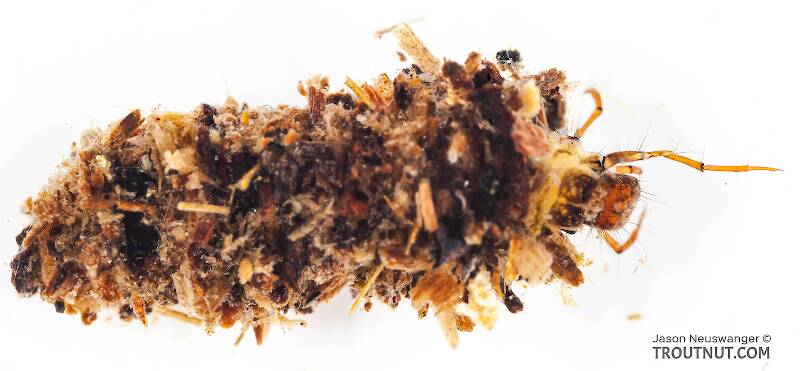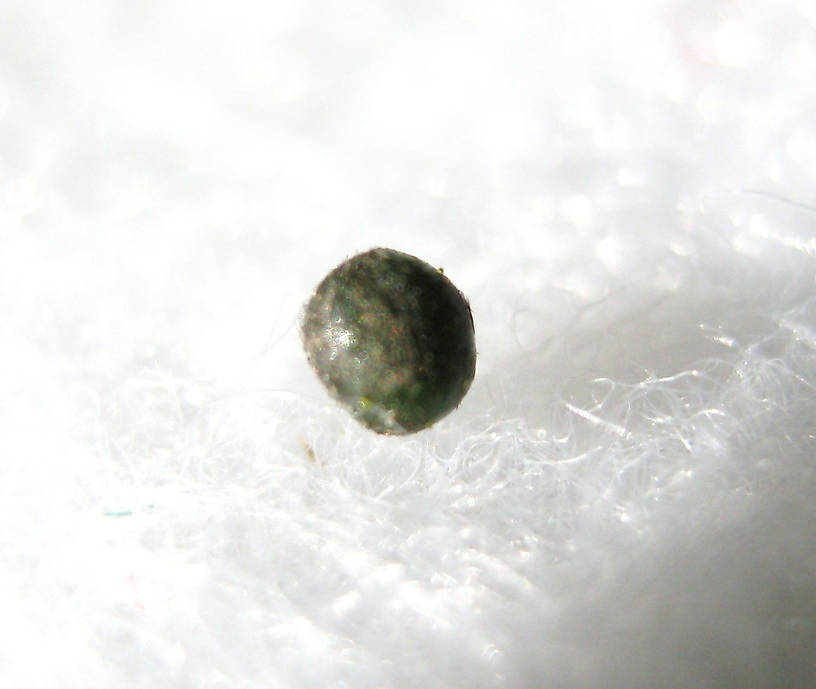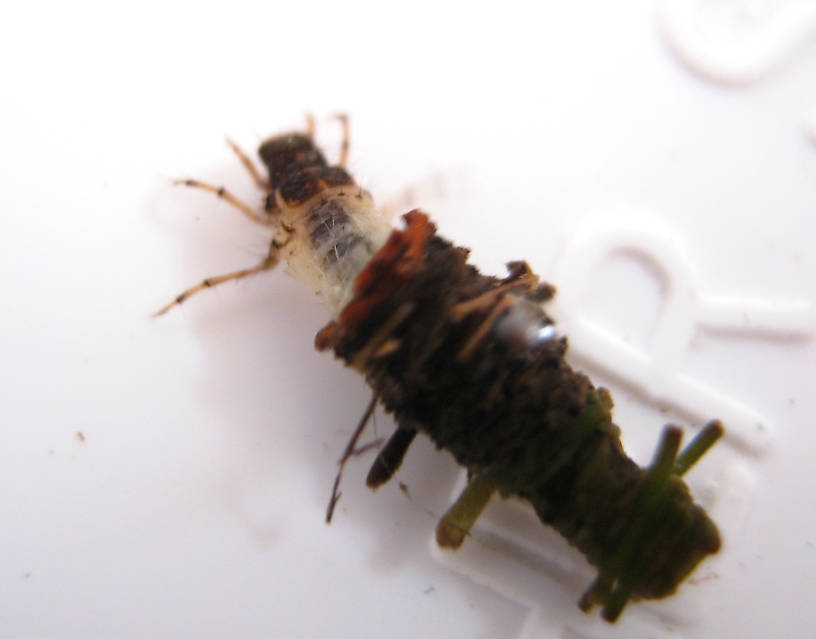
Hex Mayflies
Hexagenia limbata
The famous nocturnal Hex hatch of the Midwest (and a few other lucky locations) stirs to the surface mythically large brown trout that only touch streamers for the rest of the year.
Featured on the forum

This one pretty clearly keys to Kogotus, but it also looks fairly different from specimens I caught in the same creek about a month later in the year. With only one species of the genus known in Washington, I'm not sure about the answer to this ID.

Troutnut is a project started in 2003 by salmonid ecologist Jason "Troutnut" Neuswanger to help anglers and
fly tyers unabashedly embrace the entomological side of the sport. Learn more about Troutnut or
support the project for an enhanced experience here.
Caddisfly Family Lepidostomatidae (Little Brown Sedges)
See Lepidostoma for details. It's the only important genus in this family.
The other one, Theliopsyche, is an uncommon Eastern small stream genus.
The other one, Theliopsyche, is an uncommon Eastern small stream genus.
Family Range
Specimens of the Caddisfly Family Lepidostomatidae
3 Male Adults
2 Female Adults
5 Larvae
Start a Discussion of Lepidostomatidae
References
- LaFontaine, Gary. 1981. Caddisflies. The Lyons Press.
- Swisher, Doug and Carl Richards. 2000. Selective Trout. The Lyons Press.
Caddisfly Family Lepidostomatidae (Little Brown Sedges)
Taxonomy
Genus in Lepidostomatidae: Lepidostoma, Theliopsyche


